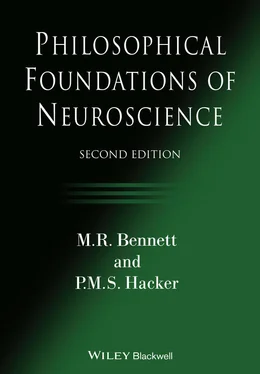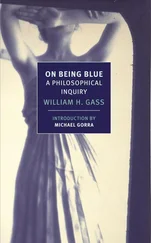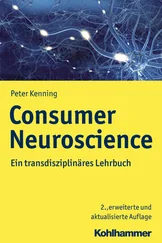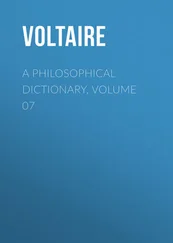Herophilus
The revolutionary writings of Herophilus (325–255 bc) are now lost, so knowledge of his discoveries on the nervous system are due to later authors, especially Galen (130–210 ad) who placed Herophilus as the most prominent among his forebears, commenting that Herophilus ‘increased anatomical theory the most’ 17for ‘the neuroanatomical knowledge of the brain remained scanty until Herophilus performed his dissections’. 18These dissections confirmed Aristotle’ s distinction between the cerebrum and the cerebellum 19and revealed the nature of the ventricles, including the fourth ventricle of the cerebellum. 20But perhaps most importantly Herophilus identified nerves and their emergence from the brain and spinal cord, for, as Galen records, Herophilus holds that ‘all the nerves throughout the body below the head grow either from the cerebellum (parenkephalis) or from the spinal marrow’. 21Herophilus also distinguished between purposive (motor) and sensory nerves, probably because of his extensive vivisection, and followed the optic nerve from the brain to the eye. 22On the other hand, Herophilus failed to distinguish between nerves on the one hand and tendons/ligaments on the other, considering these to be the terminal extensions of the nerves in muscles. 23It was not until the beginning of the twentieth century that the ending of nerves in muscle, at the synapse formed by the neuromuscular junction, was finally resolved. 24
Galen: motor and sensory centres
It was Galen who apprehended that nerves arising from the brain and spinal cord are necessary conduits for initiation of muscle contraction. The Aristotelian account was changed accordingly. Vital pneuma was held to be delivered by blood vessels to the brain and converted to psychic pneuma (whose composition was unclear), whence it was conducted along the nerves to the muscles. Thus, ‘The nerves which in consequence enjoy the role of conduits, carry to the muscles the forces that they draw from the brain as from a source.’ 25This allowed the muscles to contract, probably as a consequence of their ballooning as they filled with the psychic pneuma . 26
Galen distinguished motor from sensory nerves
Hence Galen introduced the idea of motor nerves derived from the spinal cord. 27As a consequence of his observations on injured chariot drivers, he also distinguished sensory from motor nerves . These were differentiated in terms of their relative ‘hardness’, motor nerves being ‘hard’ and sensory nerves ‘soft’. 28The hard motor nerves were uniquely associated with their origins in the spinal cord, the soft sensory nerves with the brain. 29
Using the term ‘soul’ in an Aristotelian sense, Galen argued that there was a ‘motor soul’ and a ‘sensory soul’, which were not to be considered as two different entities but as two different functions or principles of activity. 30According to this conception, and given the assumed relationship between the relative hardness/softness of nerves, the motor/sensory differentiation and the fact that the hardest nerves are found uniquely associated with the spinal cord (caudal), the idea of two separate souls or principles of activity, one associated with the spinal cord and one with the brain is natural (although it is unlikely that Galen succumbed to this temptation). It was to have considerable vogue in the eighteenth century to explain the existence of continuing spinal cord reflexes in decorticate animals. However, by then the conception of the soul (the anima ) had changed and had become entwined with that of consciousness.
Galen: the functional localizationof the rational soul in the ventricles
This association of the pure sensory nerves with the brain, and the fact that these nerves were very soft, carried with it important implications for brain function. 31It is clear that Galen associated the whole brain, and not just the ventricles, with the mental capacities of humans. In On the Usefulness of the Parts of the Body he states: ‘In those commentaries I have given the demonstrations proving that the rational soul is lodged in the enkephalon; that this is the part with which we reason; that a very large quantity of psychic pneuma is contained in it; and that this pneuma acquires its own special quality from elaboration in the enkephalon’ (‘enkephalon’ is a cognate of ‘enkephalos’, meaning ‘that which is in the head’). So Galen attributed to the brain those functions in perception that Aristotle had attributed to the heart. However, this did not distinguish between the respective roles of the cortex and the ventricles. Galen did not ascribe to the cortex any special function with regard to the higher mental powers such as reasoning, for he observed that donkeys have a highly convoluted brain. Consequently, he thought that the cerebral convolutions could not be associated with intelligence. Instead, he identified the ventricles, rather than the cortex, as the source of such powers as reasoning. 32Galen enjoyed absolute authority for more than a millennium. It therefore comes as no surprise that the association of the ventricles with higher mental functions was elaborated in detail in the following centuries.
Nemesius: the formal attribution ofall mental functions to the ventricles
It was Nemesius ( c . 390), the bishop of Emesa (now Homs) in Syria, who developed the doctrine of the ventricular localization of all mental functions, rather than just the intellectual ones. Unlike Galen, he allocated perception and imagination to the two lateral ventricles (the anterior ventricles), placing intellectual abilities in the middle ventricle, reserving the posterior ventricles for memory. Hence the idea that imagination/perception, reasoning and memory are to be found in the lateral, third and fourth ventricles respectively. Nemesius claimed that this localization was based not on a whim but on solid evidence, for he states that
The most convincing proof is that derived from studying the activities of the various parts of the brain. If the front ventricles have suffered any kind of lesion, the senses are impaired but the faculty of intellect continues as before. It is when the middle of the brain is affected that the mind is deranged, but then the senses are left in possession of their natural function. If it is the cerebellum that is damaged, only loss of memory follows, while sensation and thought take no harm. But if the middle of the brain and the cerebellum share in the damage, in addition to the front ventricles, sensation, thought, and memory all founder together, with the result that the living subject is in danger of death. 33
In relation to the anterior ventricles, he states:
Now, as organs, the faculty of imagination 34has, first, the front lobes of the brain and the psychic spirit contained in them, then the nerves impregnated with psychic spirit that proceed from them, and, finally, the whole construction of the sense-organs. These organs of sense are five in number, but perception is one, and is an attribute of the soul. By means of the sense-organs, and their power of feeling, the soul takes knowledge of what goes on in them. 35
This localization of the various mental functions in the ventricles became known as the ventricular doctrine.
The soul taken as spiritual sub-stance rather than as first actuality
It is noteworthy that Nemesius conceived of the soul in very different terms from Aristotle and his followers. Nemesius, as a Christian, was more influenced by Neo-Platonism than by Aristotelian philosophy (he was attracted by the doctrine of the pre-existence of the soul, and also by metempsychosis). He did not conceive of the soul as the form of the body, but as a separate, indestructible spiritual substance, linked with the body in a ‘union without confusion’ in which the identity of each substance is fully preserved. Consequently, he did not attribute perception and cognition to the human being (i.e. to the whole animal), but rather to the soul. The attribution of psychological attributes to the soul of a living creature rather than to the living creature as a whole, deviates importantly from the Aristotelian conception. As we shall see, the tendency to explain how a living being perceives, thinks, feels emotions, etc. by reference to a constituent substance’ s or subordinate part of that being’ s perceiving, thinking, feeling emotions, etc. runs like a canker through the history of neuroscience to this very day.
Читать дальше












